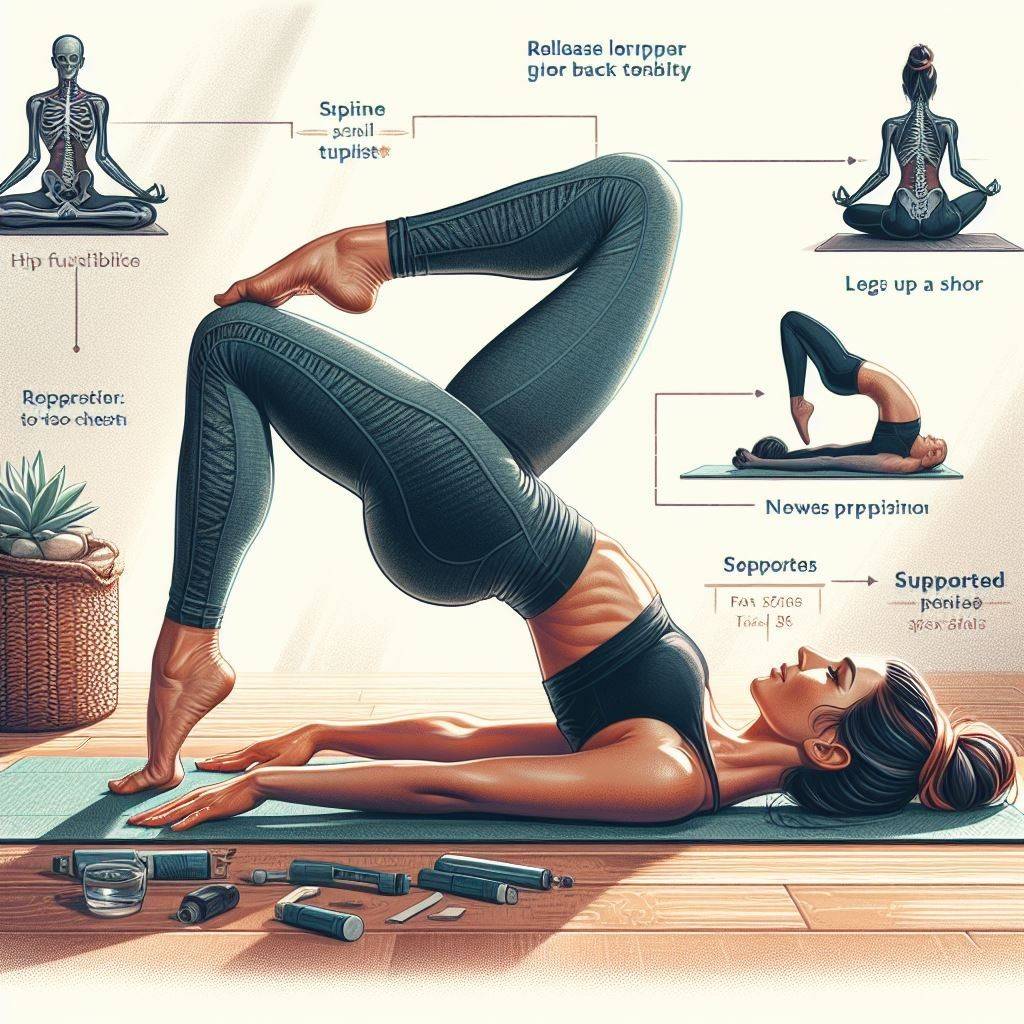Yoga for spinal cord problems: A Natural Path to Healing
Discover how Yoga for spinal cord problems can offer a natural path to healing. Find relief with specific poses and safe practices.
Introduction
Yoga for spinal cord problems offers gentle relief. The spinal cord is vital, transmitting messages between the brain and body. Injury or conditions like spinal stenosis can cause symptoms like pain and weakness. With specific poses and mindfulness, yoga can bring benefits. Practice safely with professional guidance. It can help regain mobility and well-being.
Understanding Spinal Cord Problems
The spinal cord is a crucial part of the body’s central nervous system, responsible for transmitting messages between the brain and the rest of the body. Injuries, diseases, or conditions that affect the spinal cord can lead to a range of symptoms, including:
- Loss of sensation or mobility in the limbs
- Chronic pain or discomfort
- Muscle weakness or spasticity
- Bladder and bowel dysfunction
- Respiratory difficulties
Some common spinal cord problems include:
- Spinal cord injuries (SCIs) resulting from trauma.
- Degenerative conditions like multiple sclerosis or amyotrophic lateral sclerosis (ALS)
- Spinal stenosis (narrowing of the spinal canal)
- Herniated or bulging discs.
- Spinal cord tumors
While conventional treatments like medication, physical therapy, and in some cases, surgery, can help manage symptoms, many individuals with spinal cord problems are turning to complementary therapies like Yoga for spinal cord problems to support their overall well-being.
The Benefits of Yoga for spinal cord problems
Yoga for spinal cord problems offers a range of physical, mental, and emotional benefits that can significantly improve the quality of life for those living with spinal cord issues. Here are some of the key advantages:
- Increased Flexibility and Range of MotionGentle yoga poses and stretches can help improve flexibility and range of motion in the spine and surrounding muscles, reducing stiffness and promoting better mobility.
- Improved Posture and AlignmentYoga postures encourage proper spinal alignment, correcting postural imbalances that can exacerbate spinal cord problems.
- Reduced Pain and Muscle TensionSpecific yoga poses target areas of tension and compression, releasing muscle tightness and alleviating pain associated with spinal cord conditions.
- Increased Strength and BalanceCertain yoga poses help build core strength and improve balance, which can be particularly beneficial for those with mobility challenges related to spinal cord problems.
- Enhanced Respiratory FunctionYoga breathing techniques (pranayama) can help improve respiratory function, which is often compromised in individuals with spinal cord injuries or diseases.
- Stress Reduction and Improved Mental Well-beingThe mindfulness and relaxation practices inherent in yoga can help reduce stress, anxiety, and depression, which are common among those living with spinal cord problems.
- Improved Confidence and Independence By promoting physical and mental resilience, Yoga for spinal cord problems can help individuals regain confidence and independence in their daily lives.
Yoga for spinal cord problems: Poses for Relief
While every individual’s needs and abilities may vary, here are some beneficial yoga poses that can provide relief for various spinal cord problems:
Seated Poses

- Seated Spinal Twist
- Targets: Spine mobility, abdominal strength
- Benefits: Improves spinal flexibility, relieves lower back tension
- Seated Forward Fold
- Targets: Hamstring flexibility, spine lengthening
- Benefits: Releases tension in the lower back, improves posture
- Seated Cat/Cow Pose
- Targets: Spine mobility, core engagement
- Benefits: Enhances spinal flexibility, relieves compression
Standing Poses

- Mountain Pose (Tadasana)
- Targets: Posture, balance, leg strength
- Benefits: Improves alignment, builds confidence
- Forward Fold (Uttanasana)
- Targets: Hamstring flexibility, spine lengthening
- Benefits: Releases tension in the lower back, improves posture
- Tree Pose (Vrikshasana)
- Targets: Balance, leg strength
- Benefits: Enhances stability, builds focus
Supine Poses

- Supine Spinal Twist
- Targets: Spine mobility, hip flexibility
- Benefits: Relieves lower back tension, improves range of motion
- Supine Knee-to-Chest Pose
- Targets: Lower back flexibility, hip mobility
- Benefits: Releases compression in the lower back, improves circulation
- Legs Up the Wall Pose (Viparita Karani)
- Targets: Lower back release, leg circulation
- Benefits: Relieves tension in the lower back, promotes relaxation
- Supported Bridge Pose (Setu Bandha Sarvangasana)
- Targets: Spine mobility, shoulder and hip flexibility
- Benefits: Improves spinal extension, releases compression
These poses are just a starting point, and it’s essential to work with a qualified yoga instructor or physical therapist who can tailor a program to your specific needs and abilities.
Tips for Practicing Yoga for spinal cord problems Safely
While Yoga for spinal cord problems can be incredibly beneficial, it’s crucial to approach it with caution and prioritize safety. Here are some tips to keep in mind:
- Consult with Your Healthcare Team Before starting any new exercise program, including yoga, it’s essential to consult with your doctor, physical therapist, or other healthcare professionals to ensure it’s safe for your specific condition.
- Work with a Qualified InstructorLook for a yoga instructor who has experience working with individuals with spinal cord problems or other physical disabilities. They can guide you through modifications and provide personalized support.
- Start Slowly and Listen to Your BodyAvoid pushing yourself too hard, especially in the beginning. Start with gentle poses and gradually increase the intensity as your body adapts. Pay attention to any discomfort or pain and modify or stop if necessary.
- Use Props and ModificationsYoga props like blocks, straps, and blankets can help you achieve proper alignment and support while practicing poses. Don’t be afraid to modify poses to suit your needs and abilities.
- Prioritize Breath and RelaxationRemember that yoga is not just about physical postures. Incorporate deep breathing techniques and relaxation practices to manage stress and promote overall well-being.
- Be Consistent and patient consistency is key when it comes to seeing the benefits of Yoga for spinal cord problems. Be patient and celebrate small victories along the way.
FAQs about Yoga for spinal cord problems
How can I heal my spinal cord naturally?
While there is no definitive cure for spinal cord injuries or conditions, incorporating yoga into your routine can be an effective natural approach to managing symptoms and promoting healing. Yoga offers a holistic mind-body practice that can help improve mobility, reduce pain and inflammation, and enhance overall well-being.
One of the primary benefits of yoga for spinal cord problems is its ability to increase flexibility and range of motion. Gentle stretching poses can help lengthen and decompress the spine, alleviating tension and compression that often contributes to discomfort. Additionally, yoga poses that strengthen the core and surrounding muscles can provide better support for the spine, improving posture and reducing strain.
Another significant aspect of yoga for spinal cord healing is its focus on breath work or pranayama. Controlled breathing exercises can help improve respiratory function, which is often compromised in individuals with spinal cord injuries or conditions. Deep breathing also promotes relaxation, reducing stress and anxiety that can exacerbate pain and tension.
Mindfulness and meditation, which are integral components of yoga, can also play a vital role in spinal cord healing. By cultivating a sense of presence and acceptance, individuals can better cope with the challenges associated with their condition and foster a positive mindset, which can contribute to overall well-being and resilience.
Which asana is good for the spinal cord?
Several yoga asanas, or poses, can be beneficial for individuals with spinal cord problems, but it’s essential to approach them with caution and under the guidance of a qualified yoga instructor or physical therapist. Here are some asanas that may be particularly helpful:
- Supported Backbends (Setu Bandha Sarvangasana): These gentle backbends can help decompress the spine and improve mobility in the upper and lower back regions.
- Seated Twists (Ardha Matsyendrasana): Twisting poses can enhance spinal flexibility and mobility, while also promoting better digestion and circulation.
- Cat/Cow Pose (Marjariasana/Bitilasana): This gentle flow can help warm up the spine and increase the range of motion, preparing the body for more challenging poses.
- Child’s Pose (Balasana): This resting pose can provide a gentle stretch for the back, shoulders, and hips, while also promoting relaxation and stress relief.
- Supported Forward Folds (Paschimottanasana): Forward folds can help lengthen the spine and release tension in the lower back and hamstrings.
It’s important to note that these asanas may need to be modified or adapted based on individual abilities and limitations. Props such as blocks, straps, and blankets can be used to ensure proper alignment and support.
What is the best exercise for the spinal cord?
While there is no single “best” exercise for spinal cord problems, yoga can be an excellent choice due to its low-impact nature and ability to provide a comprehensive mind-body approach. Yoga offers a range of poses and practices that can address various aspects of spinal cord health and well-being.
One of the key benefits of yoga for spinal cord problems is its focus on mobility, flexibility, and strength. Gentle yoga poses can help improve range of motion and decompress the spine, alleviating tension, and discomfort. Additionally, specific poses can target core and back muscle strengthening, which can provide better support and stability for the spine.
Breathwork, or pranayama, is another essential component of yoga that can be particularly beneficial for spinal cord issues. Controlled breathing exercises can enhance respiratory function, which is often compromised in individuals with spinal cord injuries or conditions. Deep breathing can also promote relaxation and stress relief, which can help manage pain and discomfort.
Mindfulness and meditation practices, which are integral to yoga, can also play a crucial role in addressing the mental and emotional challenges associated with spinal cord problems. By cultivating a sense of presence and acceptance, individuals can better cope with their condition and foster a positive mindset, which can contribute to overall well-being and resilience.
Does yoga correct the spine?
Yes, regular yoga practice can help correct and improve spinal health and alignment. Many yoga poses and sequences are designed to target the spine, promoting flexibility, strength, and proper posture.
One of the primary ways yoga can correct the spine is through gentle stretching and backbends. These poses can help decompress the spine, relieving pressure and tension that can contribute to misalignment or curvature issues. Additionally, poses that strengthen the core and back muscles can provide better support and stability for the spine, encouraging proper alignment and reducing strain.
Yoga also places a strong emphasis on body awareness and proper alignment. By learning to move and hold poses with mindfulness and attention to form, practitioners can become more attuned to their posture and adjust correct imbalances or misalignments.
It’s important to note that while yoga can be highly effective in improving spinal health, it should be approached with caution, especially for individuals with pre-existing spinal conditions or injuries. Working with a qualified yoga instructor who can provide modifications and personalized guidance is crucial to ensure safe and effective practice.
Additionally, consistency and patience are key when using yoga to correct spinal issues. It may take time and regular practice to see significant improvements in spinal alignment and posture. However, with dedication and proper guidance, yoga can be a powerful tool for promoting spinal health and well-being.
Conclusion
Yoga for spinal cord problems offers a gentle way to deal with challenges. You can see benefits like improved mobility, less pain, better posture, and mental wellness with specific poses, breathing, and mindfulness. But it’s important to do it safely with professional guidance, as everyone’s needs vary. Stay consistent, celebrate small wins, and trust in yoga’s healing power. If you or someone you know has spinal cord problems, consider trying yoga as a complement to other treatments. It can help you regain mobility, independence, and well-being.



